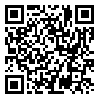BibTeX | RIS | EndNote | Medlars | ProCite | Reference Manager | RefWorks
Send citation to:
URL: http://tumj.tums.ac.ir/article-1-198-en.html

 , Pourmand MR
, Pourmand MR 
 , Ghasemi A
, Ghasemi A 
 , Zarrinfar H
, Zarrinfar H 
 , Saber S
, Saber S 
 , Soori T
, Soori T 
 , Mirhendi SH
, Mirhendi SH 
 , Hosseini M
, Hosseini M 
 , Khalifehgholi M
, Khalifehgholi M 
 , Mardani N
, Mardani N 
 , Eshraghi SS *
, Eshraghi SS * 

Normal
0
false
false
false
EN-US
X-NONE
AR-SA
MicrosoftInternetExplorer4
Background: Nocardiosis is a rare and potentially
life-threatening infection caused by several species of the Nocardia genus. The objective of this study was to develop and evaluate a rapid and new method to clinically identify relevant Nocardia species. Rapid and accurate diagnosis of Nocardia species is essential
for the treatment of severe infections and prevention of cerebral abscess.
Methods: One hundred and eighty patients, 103 (57.22%) male and 77 (42.78%) female, with severe symptomatic
pulmonary infection were studied in the course of a 12-month period in Dr.
Shariati Teaching Hospital affiliated to Tehran University of Medical Sciences
in 2010. The specimens were cultured and identified
using microbiological and biochemical tests. Polymerase chain reaction (PCR) was used to directly identify the organism in the
broncoalveolar lavage samples collected from the patients. NG1 and NG2 primers were used to amplify a Nocardia genus-specific 598-bp fragment of 16S rRNA.
Results: Nineteen samples (10.56%) were positive with PCR and 5 samples (2.78%) with conventional methods. All
samples with positive cultures were also positive by PCR.
Conclusion: The results of this study showed that PCR has a high
sensitivity and accuracy for the detection of Nocardia compared with
culture and biochemical tests. Considering the rapidity, precision, high
sensitivity and specificity of molecular techniques, use of these techniques is
suggested in conjunction with conventional methods for the detection of Nocardia phenotypes in clinical laboratories and research centers.
| Rights and permissions | |
 |
This work is licensed under a Creative Commons Attribution-NonCommercial 4.0 International License. |



